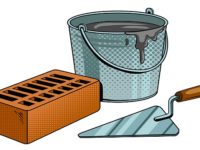In a world of the fast-moving empire that is digital marketing, filling our social-media feeds with claims of seven-figure online businesses seemingly an overnight success, this is in stark comparison to our streets and suburbs lined with empty retail premises sat forlorn and forgotten for months and years on end. It seems somehow marketing is missing the mark for our small independent bricks and mortar businesses.
Are bricks and mortar business owners powerless against the power of social media and digital marketing, or can they compete? Is there even a place for them? Are offline strategies such as printed flyers and shop fronts just too “old school” and dated to attract the millennial or simply inconvenient and not meeting the needs of the time-poor shopper? Are customers blinded by the lure of a great Facebook Ad or a glossy website promising free shipping and discounted product over a beautifully curated window display, a friendly smile and the need to leave the sofa?
After some interesting research and probing of shop owners, it seems all is not lost for our shop fronts and shopkeepers. But it takes a forward-thinking owner and careful consideration of the ever-important “location, location, location”, ROI and perhaps a touch of creativity, to nail it in the bricks and mortar club.
Kathie Argyros, owner of French Cargo, a French inspired home-interiors store in Sydney, shares her approach to marketing and how she discovered her real passion was in bricks and mortar, having traded online for two years, prior to taking the plunge and taking on premises.
Kathie recognised that by really understanding and getting to know her market intimately and by embracing both on and offline strategies to suit the needs of her market, she was able to not only survive, but thrive in a competitive market.
“I began online with a website selling my interiors and furnishings but coupled this with doing a few local markets too. It was certainly hard to compete with the online imports from China with their significantly lower prices, but I recognised that my customers valued being able to see and feel the quality of a product before purchasing. It was important for them to see the real colours too and match against colour swatches for example, something that is almost impossible to do online as colours are not true and accurate,” explained Kathie.
“After a couple of years, having spent time talking to my customers at markets and refining my range, I made the decision to take on bricks and mortar, against the advice of many I have to say! Everyone told me not to do it, ‘it’s too much effort and too much money’ and, ‘online is where it is at’. But I believed they were underestimating the effort and money involved in running a successful online store too – websites are not cheap and the costs required to stand out amongst a crowded world wide web, often don’t make a positive return on investment, not to mention the cost of outsourcing the knowledge required to succeed online with strategies such as SEO and Google Adwords; skills I did not have,” said Kathie.
And herein lies an important lesson for existing or wannabe shop owners; the first step in identifying a marketing strategy to suit a business, is to utterly know its avatar AND your own constraints. That is, how do your customers want to shop, what do they value and do you have the skills and resources to deliver that?
Kathie recognised that even with an online store, she would need storage space and that the risks and complexity of shipping large, bulky, high value items was not one to be overlooked. But moreover, she knew that her customers wanted to touch and feel her product and that there was merit in finding a balance of both on and offline marketing.
She also knew that her sales came when she was able to interact with her customers and add her personal touch to build rapport. Human interaction and great customer service is often sorely lacking with online retailers and can be one of the most lucrative marketing strategies for any business.
Hear how another store owner tackles the balance of on and offline marketing next month.
Susie Campbell, Founder, Little Black Book Marketing













